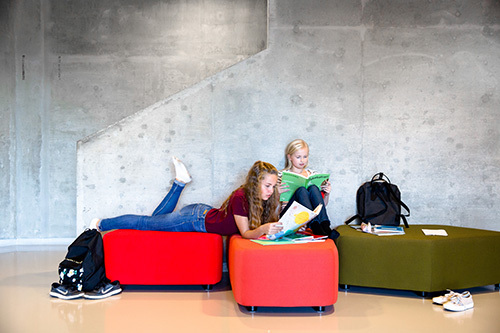
فن لینڈ, a favorite for us here at تعلیم کے لئے گلوبل تلاش, یہ تعلیم کے لئے آتا ہے اس کے جدید اور ترقی پسند سوچ کے لئے مشہور ہے. تو میں نے Kirsti Kauppi سے بات کرنے پر بہت خوش تھا, امریکہ چلے فن لینڈ کے حال ہی میں مقرر سفیر. سفیر Kauppi سے زیادہ ہے 30 خارجہ پالیسی میں تجربے کے سال. وہ اولو کے قریب ایک چھوٹے سے گاؤں میں شمالی فن لینڈ میں پلا بڑھا. وہ فننش امریکہ تعلقات کو بہتر بنانے اور فن لینڈ کے بارے میں عوام کے مفادات اور علم کی تعمیر کے لئے کام کریں گے. ہمارے انٹرویو میں جو مندرجہ ذیل, وہ فن لینڈ ہم سے سیکھ لئے ہے جو ہم فن لینڈ سے سیکھنے کے لئے ہے اور کیا بحث ہے, اس کے ساتھ ساتھ دونوں ممالک تعلیم میں پائیداری کو فروغ دینے کے لئے کام کر سکتے ہیں کہ کس طرح. اس کے علاوہ, وہ 21st صدی سیکھنے کی حکمت عملی اور ذہین ہائبرڈ کلاس رومز کے بارے میں اشتراک کرنے کے لئے زیادہ تھا.
Ambassador Kauppi – what does America have to learn from Finland and Finland from America?
How to best educate our children is one of the biggest questions in both of our countries. The world is changing very fast. The future poses new challenges to societies and individuals as well. We need an educational system that equips us to face those challenges and to make the most of our lives – پھر سے, as individuals but also as societies and, in the final analysis, as humankind. فن لینڈ کے ایک چھوٹے سے قوم ہے, and in our history education has always been seen as a means to tap all the resources of the society. What I have always admired in the USA, is the optimistic attitude and a healthy self-confidence that children grow up with. I think we have a lot to learn from each other as we seek to build the future of our own countries and of the world.
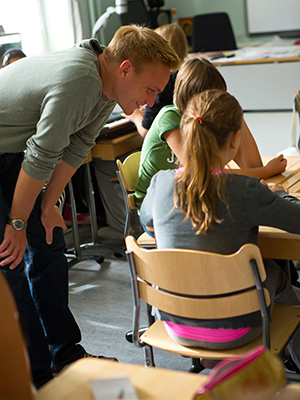
How can education encompass the goals of the UN 2030 sustainability agenda? How can peace, خوشحالی, and environmental consciousness be integrated into the classroom?
ہم ستمبر میں اقوام متحدہ میں منظور مشترکہ مقاصد کو حاصل کرنے کے لئے ہیں، تو, وہ سب کچھ ہم کرتے کا حصہ ہونے کی ضرورت, سمیت تعلیم. From the point of view of education, not only the goal number four, “quality education,” is relevant, but all 17 goals of the Agenda are.
There are important education specific processes going on at the universal level on the essence of education for sustainable development (ESD). مثال کے طور پر, the 38th session of the General Conference of UNESCO approved the Framework for Action for Education 2030 Agenda in November.
تعلیم 2030 is a major achievement of the international education community. It emphasizes inclusive and equitable quality education and lifelong learning opportunities for all, regardless of their background. مزید برآں, the Global Action Program (GAP) on Education for Sustainable Development and the related roadmap for implementing were adopted in 2014.
The GAP has two objectives. سب سے پہلے, to reorient education and learning so that everyone has the opportunity to acquire the knowledge, کی مہارت, values and attitudes that empower them to contribute to sustainable development – and make a difference. اور دوسرا۔, to strengthen education and learning in all agendas, programs and activities that promote sustainable development.
Finland values these frameworks on education, and is examining for its part what their implementation means to us, and to our current education practices. One possibility is to create a national plan on how to fulfill the goals of our international agreements.
Education for sustainable development is well integrated into the Finnish educational system. It is one of the main goals of the government concerning basic education and distribution of lesson hours. In the new Core Curriculum for Basic Education, sustainable development is part of all seven cross-cultural cross-cutting competence-areas or themes that are included in all instruction, particularly in the cross-cutting theme of “Participation and building a sustainable future”.
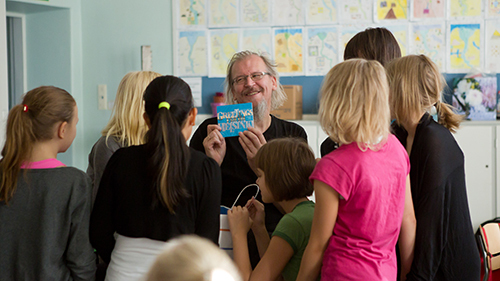
Can you speak to me generally about Finland’s new “Phenomenon-based” یا “topic-based” learning initiative? How it is different from traditional subject based learning?
We talk about the 21st century skills. ان صلاحیتوں میں تنقیدی سوچ بھی شامل ہے, searching, producing and applying information, کس طرح جاننے کے لئے سیکھنے, ICT-skills, social skills and all-in-all a broad know how surpassing the explicit knowledge taught in specific disciplines. The new core curriculum gives these skills much emphasis.
They represent a know how that is to be attained in seven sectors of the core curriculum: 1) thinking and learning how to learn, 2) ثقافتی تفہیم, communication and expression skills, 3) everyday life skills and knowledge to take care of oneself, 4) multiple literacies, 5) ICT-skills, 6) working-life and entrepreneurial skills 7) skills to participate, contribute and build a sustainable future.
The new core curriculum is built on “approaches”. The skills and understanding are not built solely on theoretical information and explicit knowledge gathered by studying specific subjects. How and with what means the students study are more important in attaining the know how of the 21st century skills. This calls for a new pedagogic approach. It is important, مثال کے طور پر, to motivate the pupils to work purposefully, develop skills for acquiring, applying and evaluating information, promote social flexibility and an ability to function in constructive cooperation, and the assumption of responsibility for others.
The approach-based working method aims to make teaching more integrated, and develop both a wide understanding and versatile skills. This is not an entirely new idea, since the Finnish basic education has always tried to offer a broad point of view to the world. Now the focus of the national curriculum has moved to make teaching more integrated, hence the integrative education model has a more important role than before.
Finnish basic education is, also in the new curriculum, based on subjects. A profound basic and common knowledge of different subjects remains the core of our general education. Integration can be adapted into teaching in various ways. سب سے پہلے, teaching can be combined by studying the same topic in many subjects at the same time, یعنی. simultaneously. دوسرا, topics of the same theme can be arranged to be studied one after the other, یعنی. conjoined. تیسری, there can be theme days, excursions or events organized around a specific topic of a given school subject. چوتھا, long-term entities combining multiple subjects can be planned and executed in many different ways. آخر, one can form integrated entities from a variety of subjects.
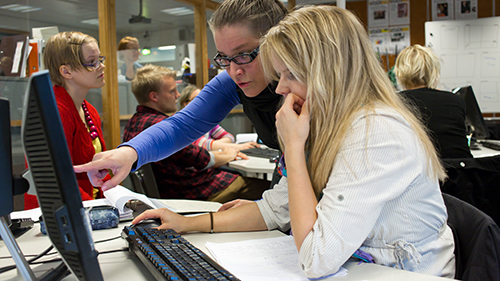
What sort of synergy is there between education today and the education needs of tomorrow?
Despite the rapid pace of change in the world, much remains the same. The children are future citizens, workers, ادیمیوں, decision makers and parents. The education system cannot be an isolated part of the society, it has to adapt to the changes, create change, and hold on to valued parts that do not need to be changed.
Pupils entering the Finnish comprehensive education system at the age of seven will stay in the workforce until around 2070’s. اس وقت کے دوران, tools and occupations will probably undergo drastic changes. The aim of our education system is to equip all our children with the necessary knowledge and skills to take part in shaping their own future. These skills and knowledge are not the same as for our generation. لہذا, the curriculum, learning environments, teacher education, school leadership, learning materials and tools need constant updates.
The education system should also be a catalyst of change. Pupils as innovators and new thinkers, teachers as managers and coaches of learning, and schools as future oriented learning organizations can bring new innovations to improve society and provide competitive advantage in global competition. This requires autonomy and room for rethinking on all levels in the education system.
We must also always remember that children are still children, needing care, room for play, and protection and guidance from responsible adults. The values inherent in our new core curriculum for comprehensive education remain largely the same: uniqueness of pupils and their right to good education, humanity, comprehensive knowledge of the world, مساوات, democracy, seeing cultural differences as richness, and the necessity of a sustainable way of life.
As far as future educational needs are concerned, we should see and hear the signals and needs coming from the society at large. We should also actively engage in creating the responses, and continue passing on the values and ideas that previous generations have guarded and passed on to us.
Why an integrated hybrid education now? What is it about the present moment that means more real world skills are needed to be brought into the classroom?
More information is accessible to more people all the time, and the life cycle of information has shortened. We need continuous personal development to keep pace with this, to be able to shape our own lives and have fulfillment. The avalanche of knowledge and information is just too much. We need skills and comprehension which will not become outdated, but instead create a basis to a continuous renewal: skills of thinking and learning, سماجی مہارت, ICT-skills, creative and innovative skills. The competition over students’ وقت, motivation and attention has become more intense than before. Schools need to find new ways to engage their students, now and also in the future. We in Finland are trying to do this, and that is why we put great effort in continuously developing our education and school system.
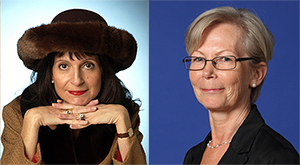
(All photos are courtesy of the Embassy of Finland Washington D.C.)
سر مائیکل باربر سمیت میرے ساتھ اور عالمی سطح پر معروف فکری رہنماؤں (برطانیہ), ڈاکٹر. مائیکل بلاک (امریکہ), ڈاکٹر. لیون Botstein (امریکہ), پروفیسر مٹی Christensen کے (امریکہ), ڈاکٹر. لنڈا ڈارلنگ-ہیمنڈ (امریکہ), ڈاکٹر. MadhavChavan (بھارت), پروفیسر مائیکل Fullan (کینیڈا), پروفیسر ہاورڈ گارڈنر (امریکہ), پروفیسر اینڈی Hargreaves نے (امریکہ), پروفیسر کریں Yvonne ہلمین (نیدرلینڈ), پروفیسر کرسٹن Helstad (ناروے), جین Hendrickson نے (امریکہ), پروفیسر گلاب Hipkins (نیوزی لینڈ), پروفیسر Cornelia Hoogland (کینیڈا), فاضل جیف جانسن (کینیڈا), مسز. چینٹل کوفمین (بیلجیم), ڈاکٹر. EijaKauppinen (فن لینڈ), سٹیٹ سیکرٹری TapioKosunen (فن لینڈ), پروفیسر ڈومینک Lafontaine (بیلجیم), پروفیسر ہیو Lauder (برطانیہ), رب کین میکڈونلڈ (برطانیہ), پروفیسر جیف ماسٹرز (آسٹریلیا), پروفیسر بیری McGaw (آسٹریلیا), شیو ندار (بھارت), پروفیسر R. نٹراجن (بھارت), ڈاکٹر. PAK NG (سنگاپور), ڈاکٹر. ڈینس پوپ (امریکہ), شریدر رازگوپالن (بھارت), ڈاکٹر. ڈیانے Ravitch (امریکہ), رچرڈ ولسن ریلی (امریکہ), سر کین رابنسن (برطانیہ), پروفیسر Pasi Sahlberg (فن لینڈ), پروفیسر Manabu ساتو (جاپان), Andreas کی Schleicher (پیسا, او ای سی ڈی), ڈاکٹر. انتھونی Seldon نے (برطانیہ), ڈاکٹر. ڈیوڈ Shaffer کے (امریکہ), ڈاکٹر. کرسٹن عمیق کر رہے ہیں (ناروے), چانسلر اسٹیفن Spahn (امریکہ), ایوز Theze (LyceeFrancais امریکہ), پروفیسر چارلس Ungerleider (کینیڈا), پروفیسر ٹونی ویگنر (امریکہ), سر ڈیوڈ واٹسن (برطانیہ), پروفیسر Dylan کے Wiliam (برطانیہ), ڈاکٹر. مارک Wormald (برطانیہ), پروفیسر تیو Wubbels (نیدرلینڈ), پروفیسر مائیکل نوجوان (برطانیہ), اور پروفیسر Minxuan جانگ (چین) وہ تمام اقوام کو آج سامنا ہے کہ بڑی تصویر تعلیم سوالات دریافت کے طور پر.
تعلیم کمیونٹی پیج کے لئے گلوبل تلاش
C. M. روبن وہ ایک موصول ہوئی ہے جس کے لئے دو بڑے پیمانے پر پڑھا سیریز کے مصنف ہے 2011 میں Upton سنکلیئر ایوارڈ, “تعلیم کے لئے گلوبل تلاش” اور “کس طرح پڑھیں گے?” انہوں نے تین bestselling کتابوں کے مصنف ہیں, سمیت Wonderland میں یلس اصلی, کے ناشر ہے CMRubinWorld, اور ایک Disruptor فاؤنڈیشن فیلو.
C پر عمل کریں. M. ٹویٹر پر روبن: www.twitter.com/@cmrubinworld


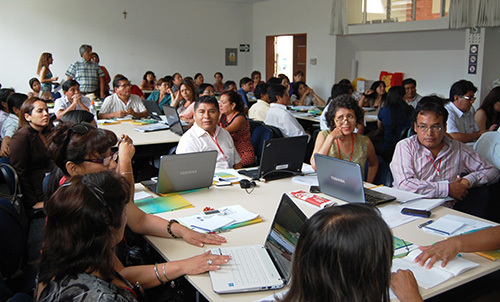

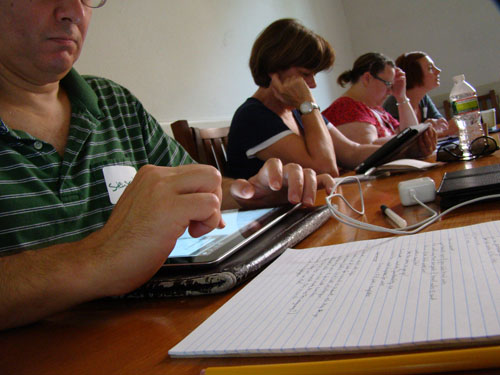

حالیہ تبصرے